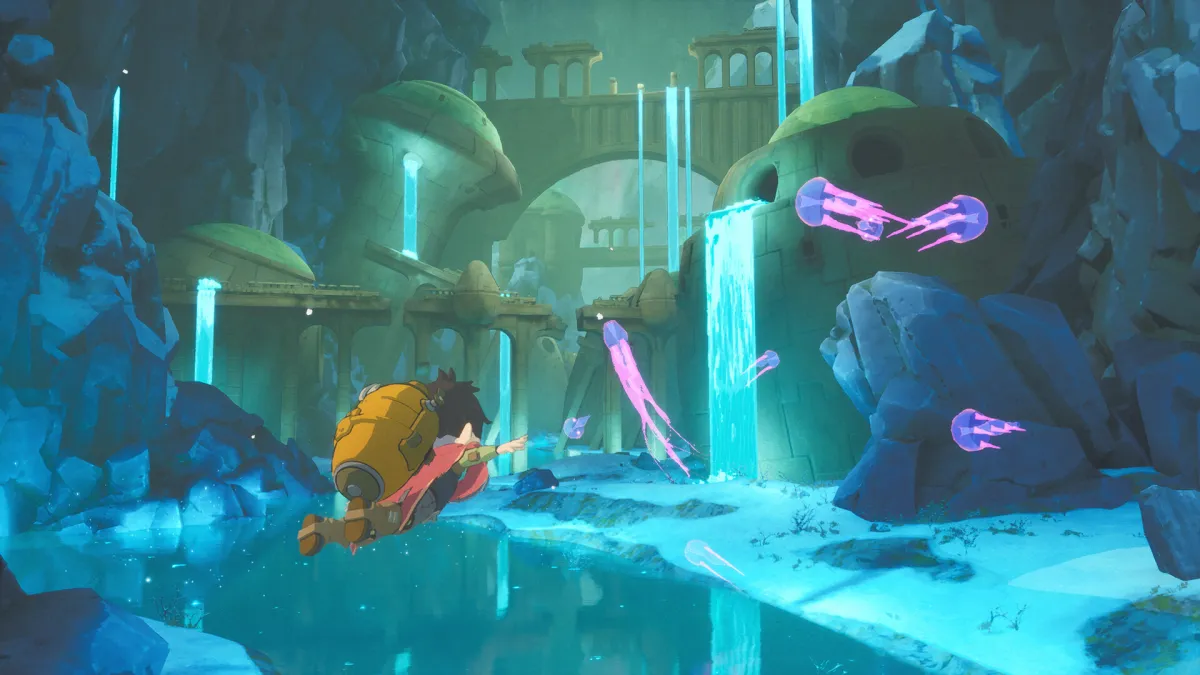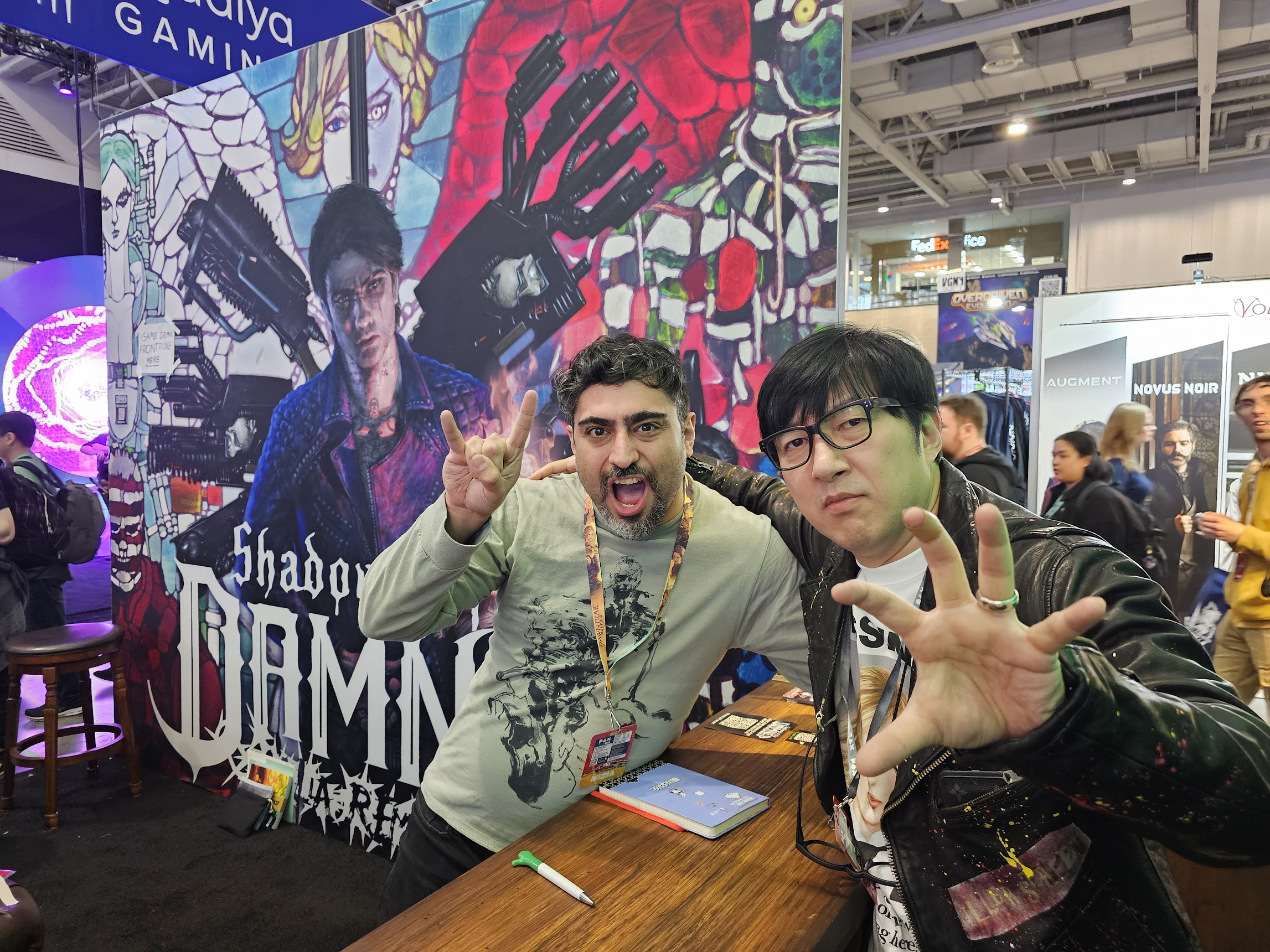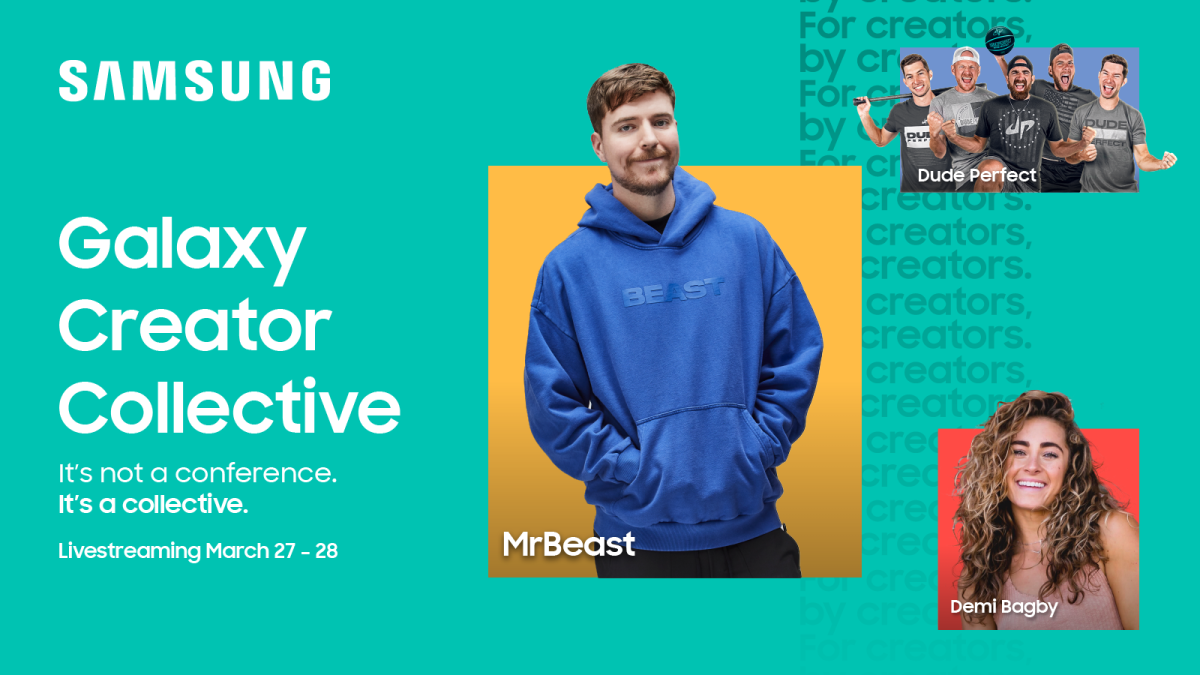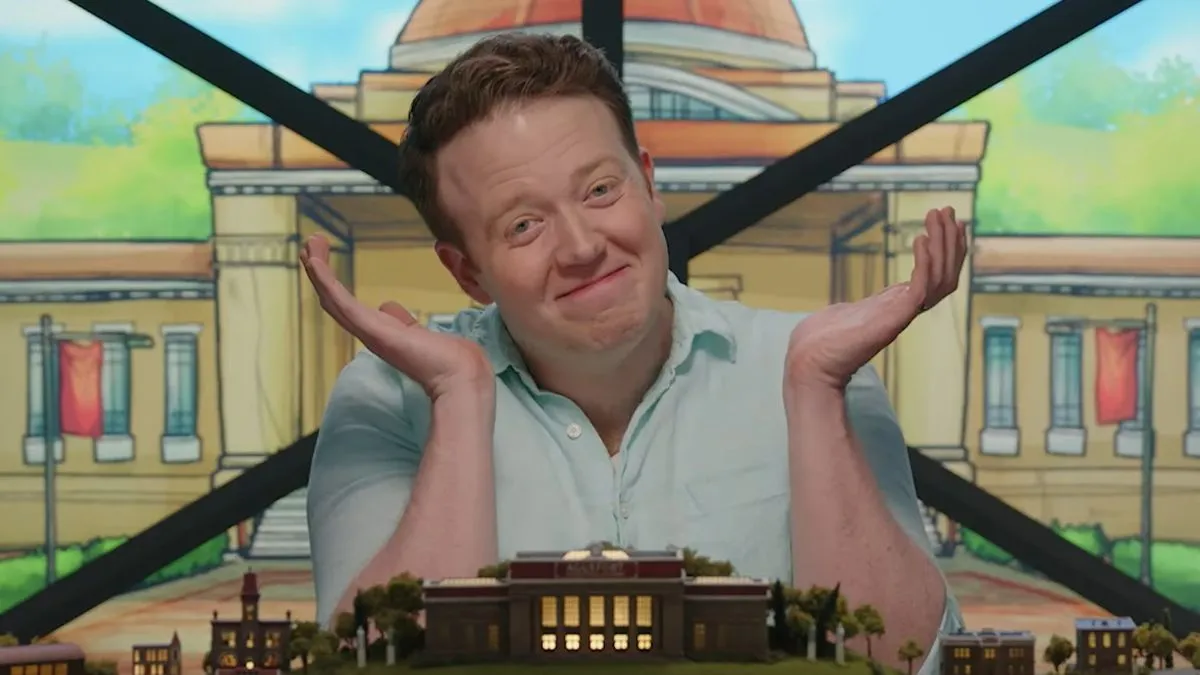Studio Ghibli has inspired several games through the years, but none seem to capture its otherworldly mood quite like Europa. This nonviolent adventure game comes from a small team led by Blizzard artist Helder Pinto, and while it is clearly a love letter to magical worlds like Howl’s Moving Castle and Castle in the Sky, it also seems to offer so much more. Its reveal trailer gave us a glimpse at Zee, a small android boy with the power to glide over glistening ponds and through worn-down ruins. The terraformed planet he inhabits is our playground to discover, and we’ve only just gotten a taste of what it has in store. We had the opportunity to interview Helder Pinto about Europa to get a peek behind the curtain at how the game team has created a dreamlike version of Jupiter’s moon.
In addition to learning more about Zee and his Zephyr jetpack, our chat shed light on how Europa’s open-ended puzzle-platformer gameplay will evolve throughout the course of its celestial story.
The Escapist: The Europa team is made up of only a few people. Can you talk about the whole team and why they’re the perfect group to tackle this project?
Helder Pinto: For a while, it was just myself trying to find an art style that would evoke zen, peaceful and harmonious vibes using a watercolor-inspired art direction. When I finally landed on something I was happy with, I foolishly thought I could continue the process and tackle the code, animation, locomotion, story, effects, character, gameplay, etc. all by myself. But I quickly found out that with a full-time job and a family with kids, it would be impossible to do alone; furthermore, having other people around you to share this journey with is a lot more rewarding.
Fortunately, though, the inviting art style and the foundation I laid out was enough to convince a few close friends to help out, specifically in their area of expertise.
So right now, we’re a handful of people helping out with development on and off, during our free time. We’re all veteran developers, so a project like this offers us a lot of freedom: free of expectation, free to explore, take risks and apply our skills in fresh ways.
We also have help from the fantastic folks over at Future Friends Games, who have been invaluable in this last leg of development, and they’re as much a part of the team as anyone else now.
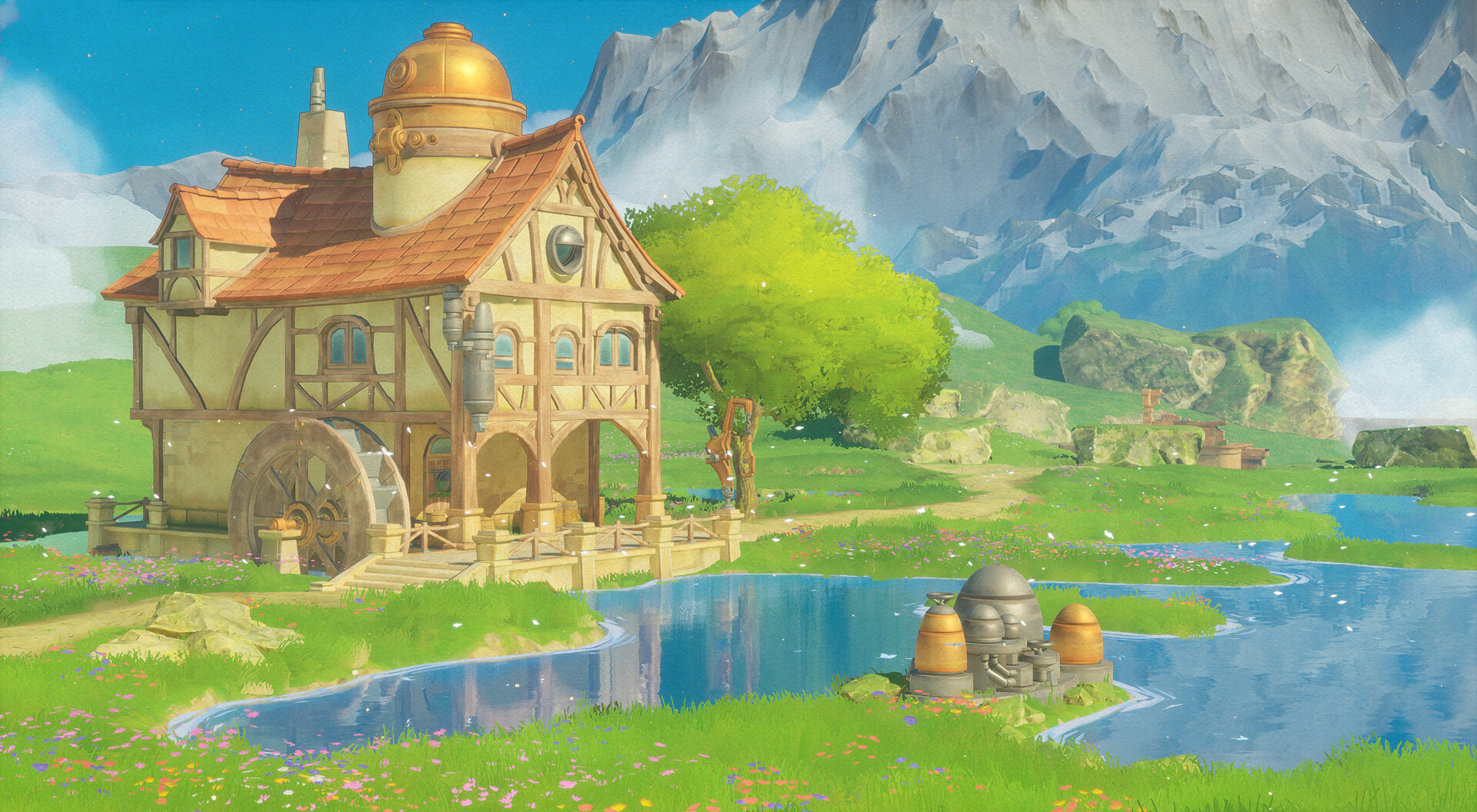
It sounds like Europa’s development began in 2017 as a passion project. When did it become the more ambitious title we’ve seen today?
Helder Pinto: I’m an artist by trade now, but I started my career with game modding. Back in those days, either an individual or a very small team could design some rather interesting and fun projects. There was a lot of originality back then, so I wondered if I could come full circle and make a passion project indie game — bring in all the years of experience as a world and environment artist while exploring and learning other tools and fields in tandem.
It started with what I was already comfortable with, which is stylized environment art. At the time I was watching a bunch of Ghibli movies for the first time ever, and it struck me that watercolor art styles were weirdly absent from video games; that put me on the path to try and study those movies very closely. Zoom in and analyze screen caps from the movies, watch every documentary, read every book about them I could get my hands on. It wasn’t just enough to mimic the style (that would never work) — you need to understand what makes it work, at its core. Then you run it through your own unique DNA, and something fresh will come out on the other side.
However, a game isn’t just art; it’s a collection of countless elements brought together, and as a media, it has the unique ability to tell a story through gameplay and active storytelling rather than passive storytelling. I guess that’s where it started getting a little more ambitious and not so much of an “art tech demo” when we realized we could mix together art, storytelling, and gameplay that offers the sense of momentum through flight and package it into a short game experience.
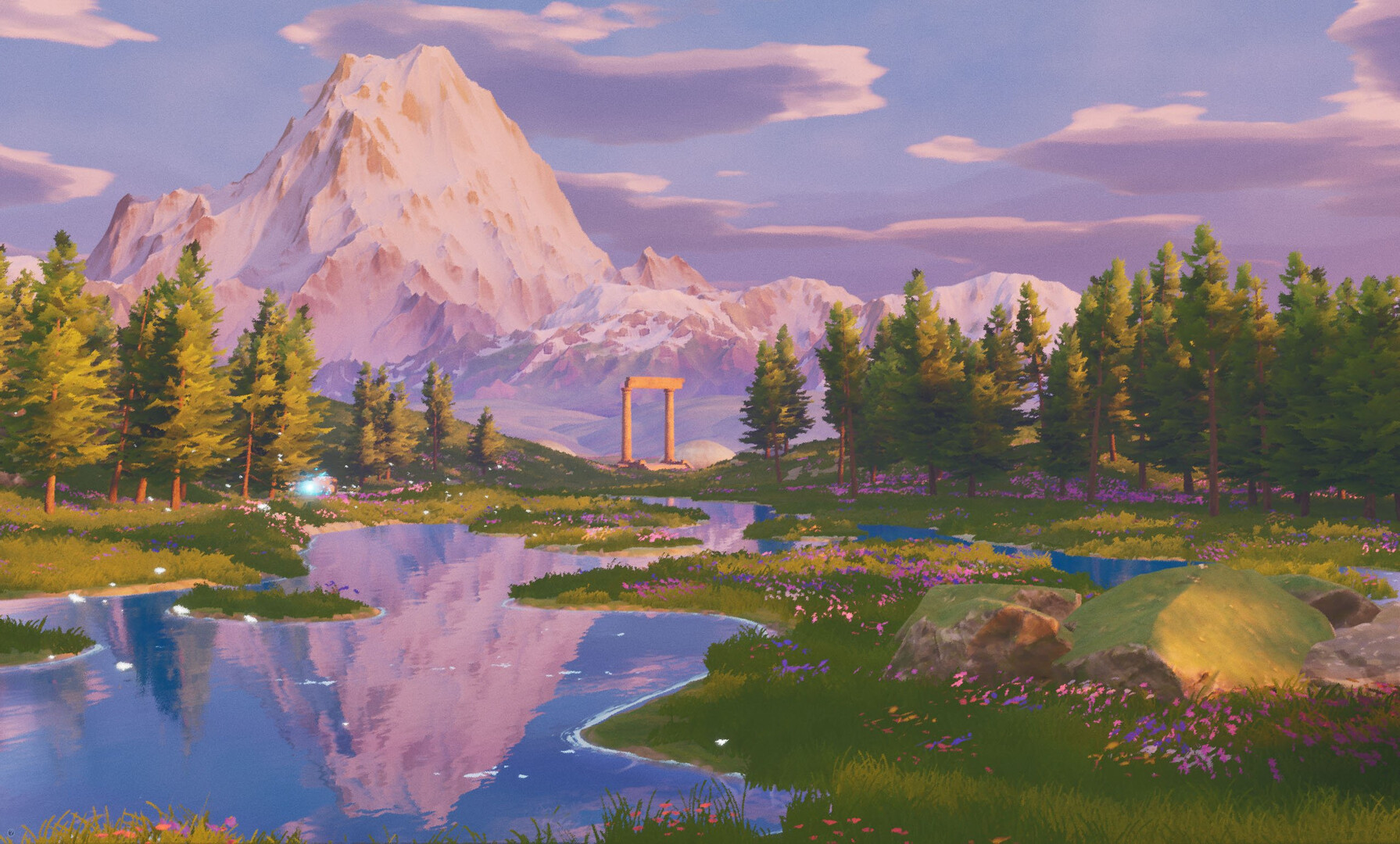
I’d love to learn more about Zee. What can you tell us about the friendly little protagonist we’ve seen gliding around in Europa’s first trailer?
Helder Pinto: Zee is the android boy you play the game as. He was created, or rather handcrafted, by the last human on the terraformed Jupiter’s moon, Europa.
Something catastrophic happened and the civilization that inhabited the moon perished: As you play the game, you’ll slowly piece together Europa‘s story and unveil what really happened.
What happened to humanity, what happened to the civilization that lived here, what happened to the curious species of beings that humans were sharing the moon with? Most importantly, you’ll learn why the last human alive, facing the likely extinction of humanity, decided to handcraft an android in the image of a child before his passing.
Europa pretty clearly takes inspiration from Studio Ghibli. Can you talk about which Ghibli projects specifically influenced your game’s art style?
Helder Pinto: Absolutely, a few other animated shows inspired the art style of the game, like Ōban Star-Racers for example. But movies like Howl’s Moving Castle, Lupin III: The Castle of Cagliostro, and Castle in the Sky were definitely the biggest inspirations for a lot of the fundamental values of the art direction and mood of the experience.
It’s grounded on the surface but ethereal and otherworldly deep down. Those movies have the magical touch of using the mundane to transport the viewer to another world and use the characters to guide you down a narrative journey that’s akin to a dream. It’s able to leave a peaceful smile on your face, but it’s also sometimes thought-provoking in the way that it makes you reminisce about your own past and your own lived experience, connecting you back into the movie that you’re watching… or the game that you’re playing.
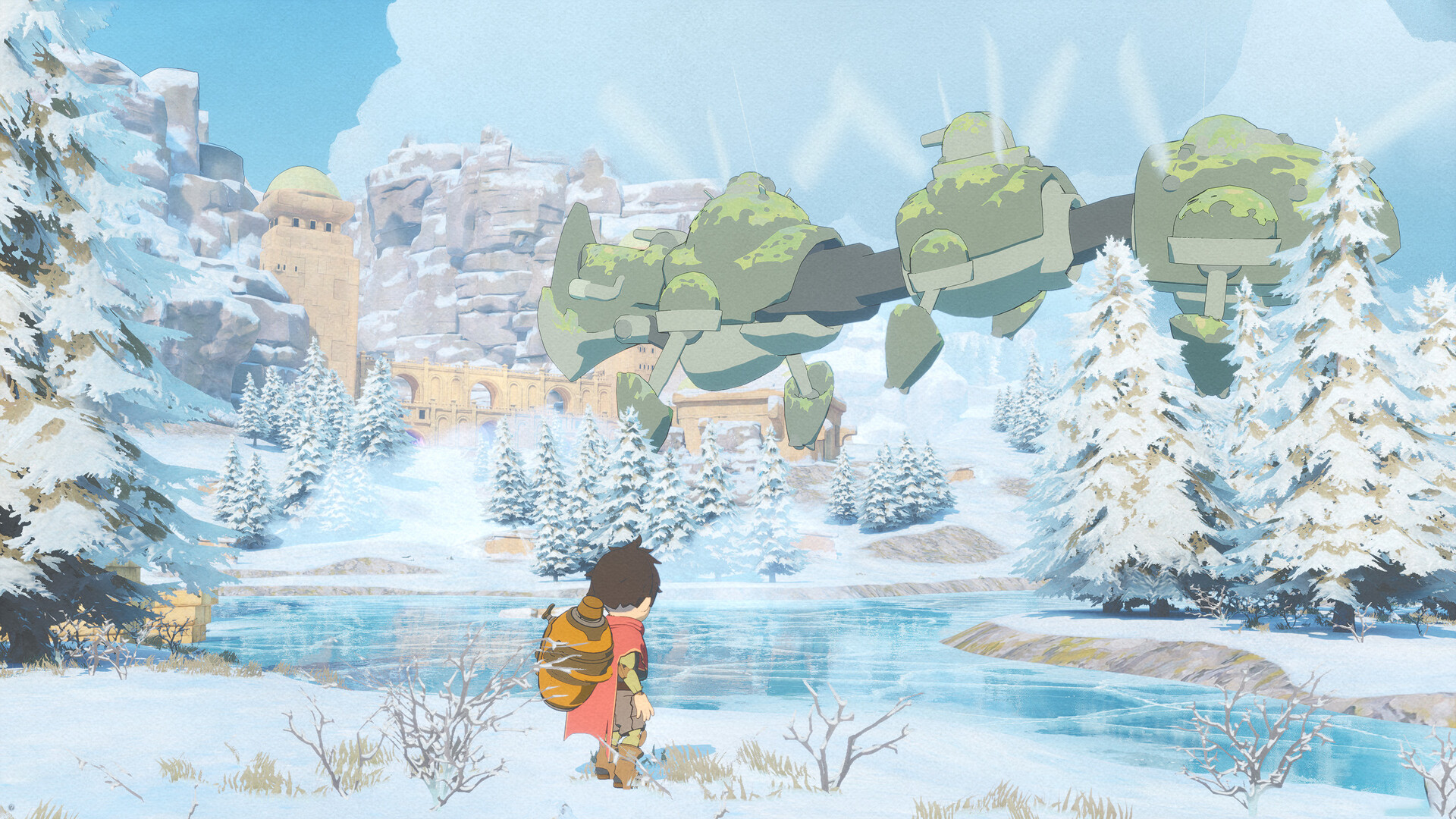
You’ve worked as an art lead on games like Overwatch and Diablo. How did you translate your skills as an artist from those projects to Europa?
Helder Pinto: The last couple of games I’ve worked on in my career, and the very talented people I’ve got to work alongside, taught me how to successfully make a stylized game that connects with audiences.
You know that old Einstein quote: “Everything should be made as simple as possible, but not simpler”? I always loved that quote, it always rang true to me, but working on those titles really cemented the meaning in my mind. It’s one thing to read about something and another to actually live through it.
It means that simplicity, readability, and clarity are some of your most important values when trying to make these kinds of games that don’t rely on fancy next-gen technology to look good.
Basically, it made me realize that mindset and good artistic values are the most important thing to apply when tackling a creative venture. If you’re perspicacious enough, you’ll realize there are formulas to almost everything. Learning what those formulas are and discarding what doesn’t work is one of the big lessons I carried with me to Europa.
Many players have already latched on to Europa’s fluffy and lush art style. Did you always envision the style we saw in the trailer when you began its development?
Helder Pinto: Actually, yes. I’m a big fan of the “visualize, then execute” mantra. Before I painted a single piece of concept art, I visualized in my mind what the game could look like and how it would play.
I have a couple of methods for artistic introspection, and eventually, it dawned on me that the game should look like a moving watercolor painting — you should feel the texture of the paper on the screen. The materials had to be subtle and brush stroke-y; the environments had to feel lush and be able to tell a story without the use of words, instead using a uniquely stylized architecture and composition.
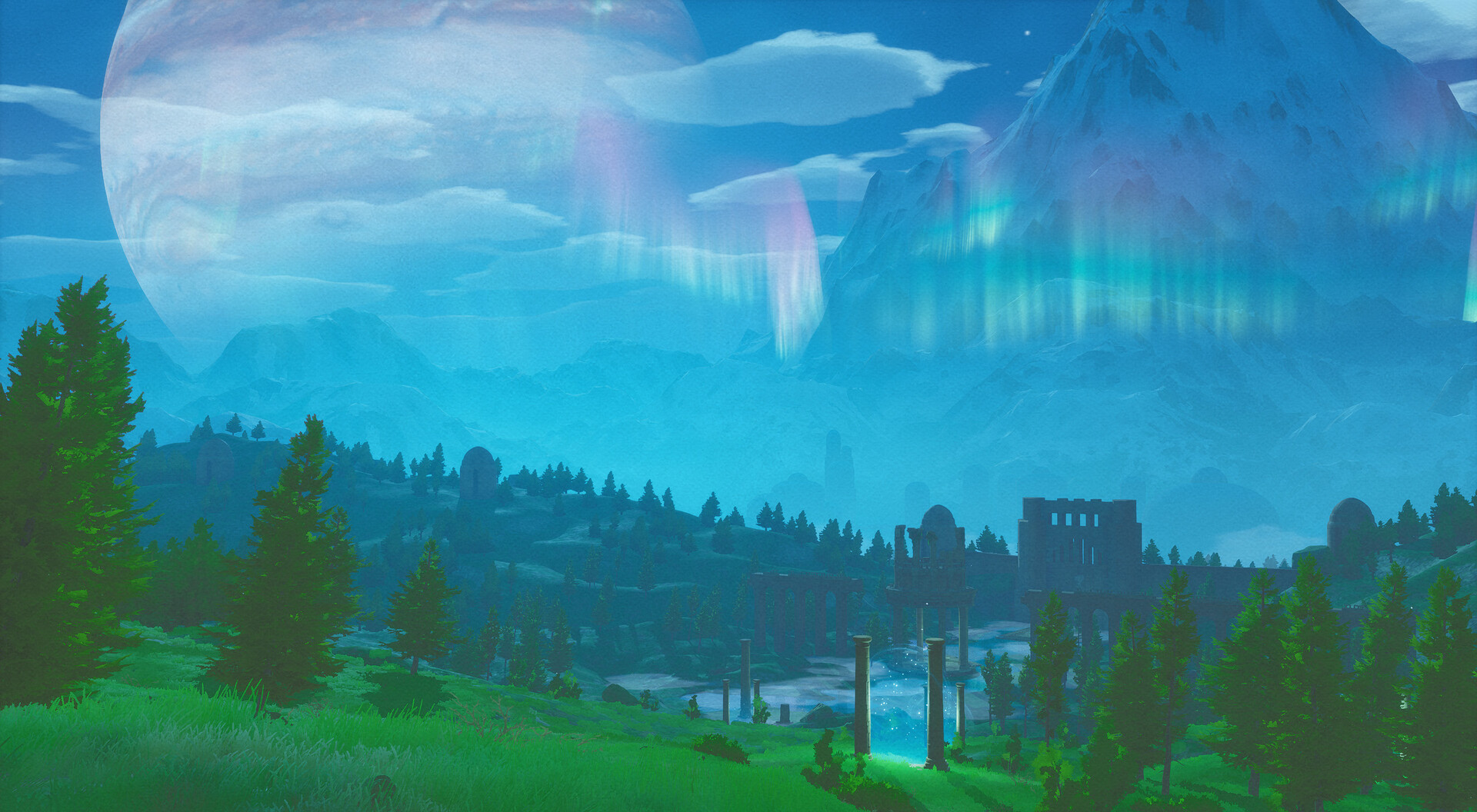
Europa is gorgeous, but I want to know more about its gameplay. Can you walk me through its core gameplay loop?
Helder Pinto: From the start, the plan was to have the game’s main feature be all about flight.
Not that the whole game would take place in the air — quite the contrary, the game would use flight and airborne momentum as a gameplay reward mechanic. Flying would need to feel liberating and tied with a sense of momentum as you pick up and chain level items that recharge your Zephyr levitation device on Zee’s back.
But even when you’re out of energy and on your way to pick up a nearby recharger, movement over the ground feels smooth as you slide down slopes and charge jump and platform over tall obstacles.
The game doesn’t make use of classical combat systems. Instead, each level will present the player with a few challenges, most of them being exploration-based puzzles. Furthermore, each different “biome” will introduce new challenges to keep things fresh, ranging from platforming sections, environmental hazards, creatures that zap the energy away from your Zephyr device, etc.
Europa looks like a serene and peaceful adventure. We know what its looks were inspired by, but can you open up about some other games that inspired its gameplay?
Helder Pinto: When I started the project, I wanted to choose a genre that was both unrepresented and underexplored while being feasible to do solo or with a tiny team, I didn’t take long to realize that something akin to a “walking simulator” could be a good choice. Let the art and narrative carry the heavy load… However, I really wanted to do a third-person game, introduce exploration, a lot of flying and levitating in the air, and maybe some platforming, so I dropped the idea at some point.
So, the game Journey quickly became one of my main inspirations, particularly when it came to pacing, the scale of the levels, and the narrative structure of “show, don’t tell.”
I also studied very closely the game Abzu, with its underwater world and heavy focus on environmental storytelling and interesting interaction with the world.
Another game I loved and looked at very carefully was Gris; it’s a beautiful 2D platformer but also shares a lot of what this genre of games has to offer.
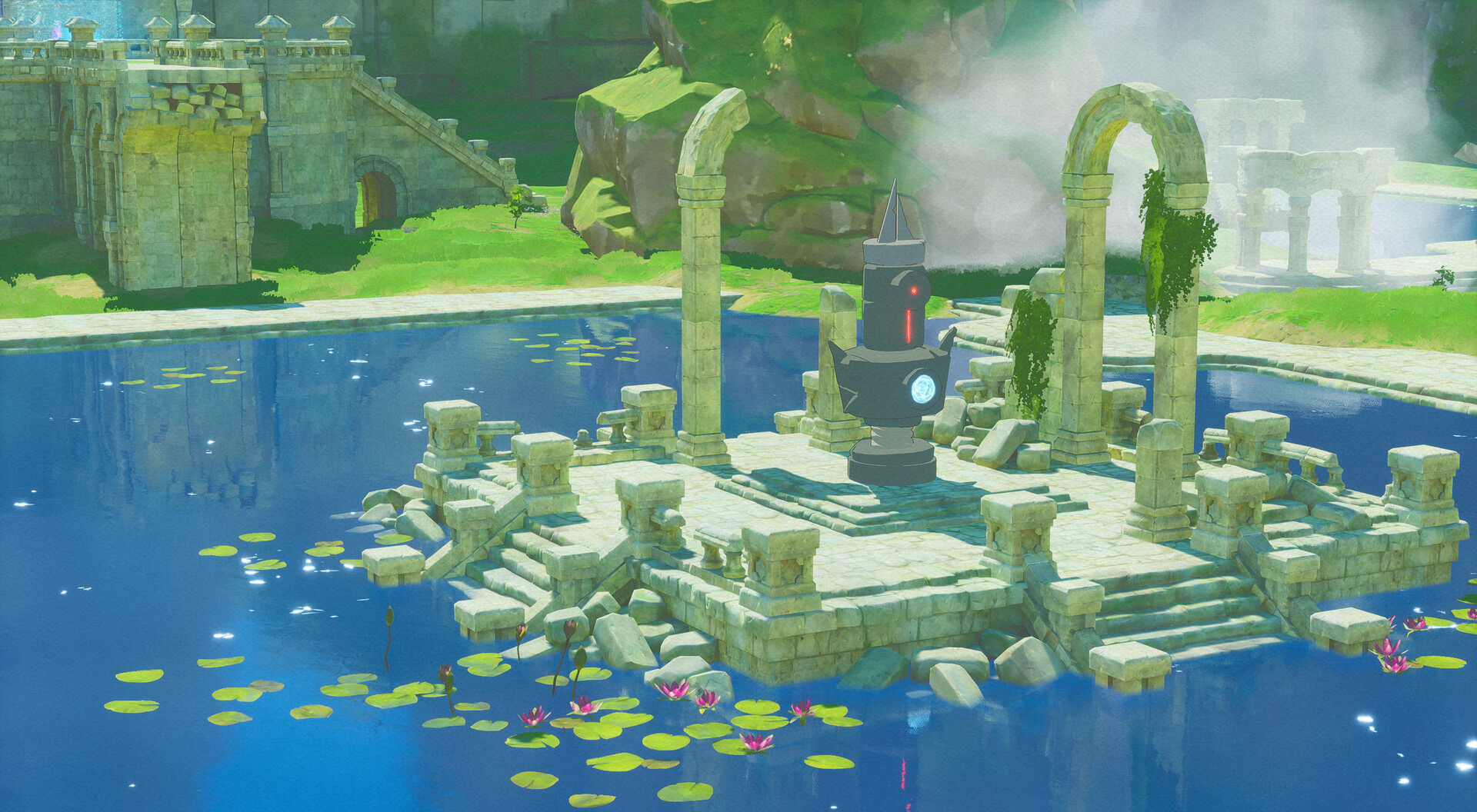
You’ve mentioned that the Zephyr jetpack can be upgraded over time. What sort of upgrades will players unlock and how will they go about doing so?
Helder Pinto: In the first sections of the game, you will be able to do a charged jump and glide. Eventually, you’ll unlock the ability to levitate upwards for a brief period of time. As you progress in the game, you’ll be able to increase the levitation capacity by exploring the environment and finding Zephyr expanders; some are relatively well hidden, which hopefully will incentivize the player to explore the world of Europa.
How big is Europa’s world?
Helder Pinto: The main goal of Zee is to make it to the flying island. As he travels there, Zee will pass through five different “biomes,” with a few playable levels in each of them. Europa is not an open-world game since every level has a beginning and an end. Some levels are more open, giving the players a great sense of freedom, especially paired with the levitation. Other levels are more linear in their design nature, with a more obvious path forward but offering different traversal challenges.
We’ve seen a handful of different biomes so far. How will these different areas change traversal and shake up gameplay?
Helder Pinto: The individual biomes reflect the story being told to the player. As well as in their presentation with distinct mood and lighting, it’s also reflected in the design of the levels themselves.
The game starts out in green and open grassy meadows full of lakes and opportunities for exploration. As Zee makes his way through the mountains, the rougher terrain offers opportunities for new gameplay sections and different traversal feelings, from a few platforming sections to simple puzzles.
Zee will pass through the cavernous depths of Europa; the ethereal nature of the caves allows us to introduce fresh gameplay sections with different hazards, including creatures that zap your ability to fly.
You also get to play through the snowy mountain ridge next to the flying island. Here we make use of the weather and wind as an obstacle among other surprises.
Eventually, you’ll arrive at the flying island itself, which will offer some interesting challenges in terms of traversal, exploration, platforming, puzzles, and the narrative climax.
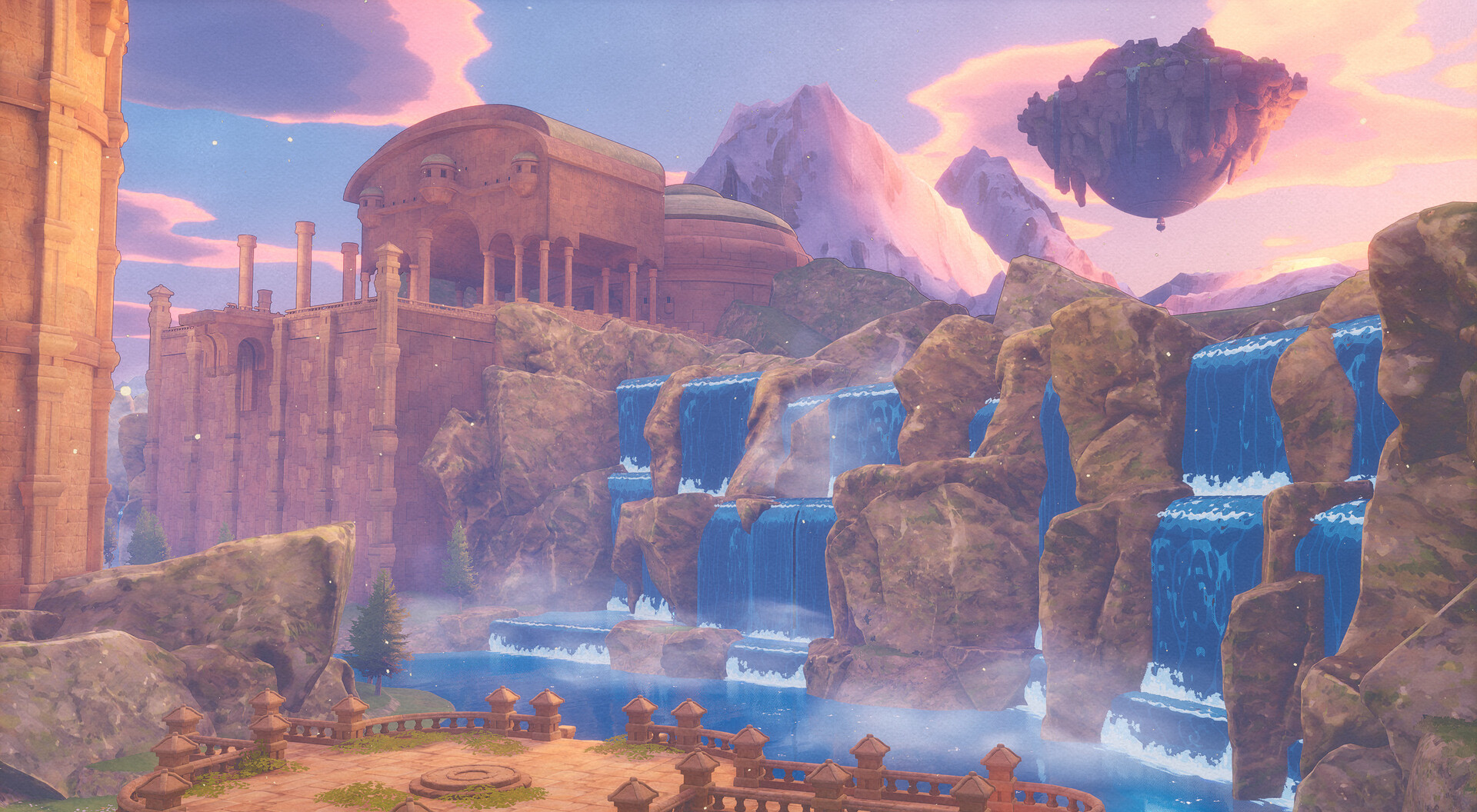
You’ve already confirmed that Europa is coming to consoles. Is there any chance you could shed some light on which consoles specifically? This project looks like it would be right at home on Nintendo Switch.
Helder Pinto: As stated, we’re a tiny team with very limited resources, so a multiplatform launch on release day would be very hard to achieve. But yes, there are plans to release the game on as many platforms as possible, most likely post-PC release. Once the game is out on PC, all our efforts should be redirected to other platforms. That’s the current plan, at least!
Is there anything else you’d like to add about Europa?
Helder Pinto: Europa is a game meant to touch people’s hearts through narrative, art, and design. There’s much more we didn’t talk about today, specifically about Zee’s maker and the world he lived in up to that point. We’re particularly excited to hear people’s reactions to the story, and we can’t wait to talk more about it.
Please follow the game’s progress on your favorite social media platform, and stay tuned for more later in the year.
Thank you for the opportunity to talk more in-depth about this passion project of ours.
-Helder
This interview with Helder Pinto for Europa has been edited for clarity.

